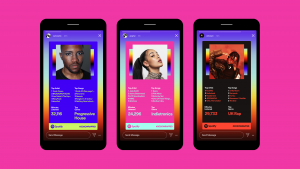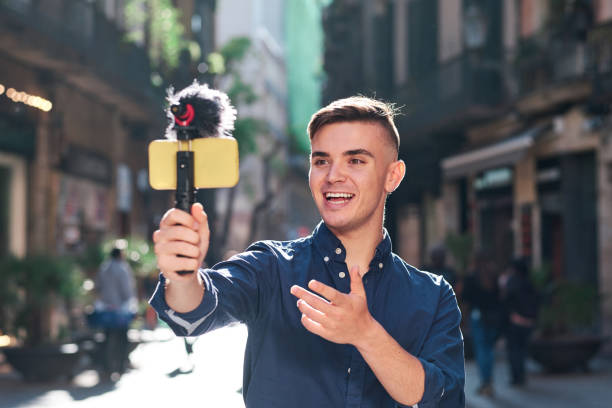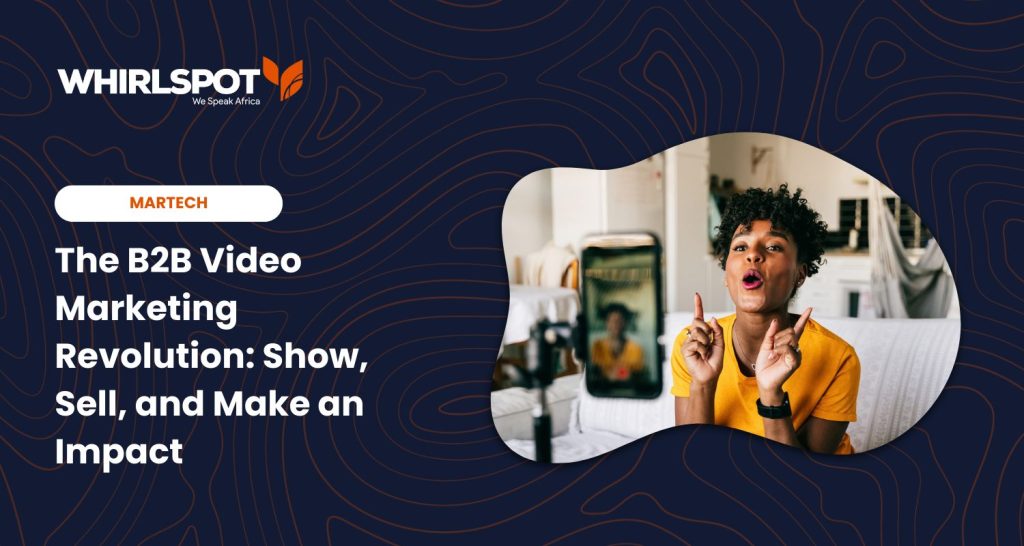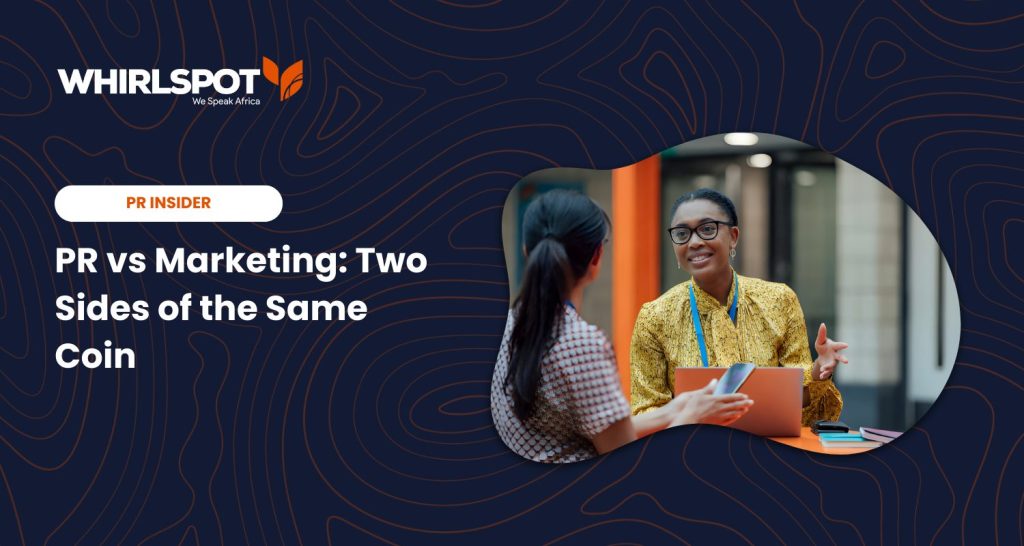In the summer sun, Elizabeth’s soft curls had bleached to a lighter shade of gold, not evenly, but in streaks, leaving warm honey in between. Against her caramel skin, it was more beautiful than any picture-perfect “do.” But today wasn’t a day to be self-conscious; she tied it up behind her head and, in its messiness, rested her head against the cool metal of her work chair.
With the sunset lights creeping in through the open blinds, casting the dirty ceiling a rusty grey, she pondered over the age-old question – how do I tell stories with my content? Okay, maybe that was a tad bit dramatic. But it caught your attention. As content marketers, it’s important to remember our storytelling roots.
It’s easy to resort to “Top 5 lists” and “ultimate guides,” but what X-factor sets your content apart from the competition? Brand storytelling is the key to creating engaging and shareable content. With everyone trying to optimize content, we often forget the essential part—to make it captivating.
At its best, content marketing is storytelling, a method of building strong relationships and sparking conversation with your audience. If you take a look at some of the biggest brands around you, you’ll probably notice that they are incredible storytellers;
- Nike tells stories of people doing the seemingly impossible
- Airbnb tells stories of people creating a sense of belonging around the world
- Coca-Cola tells stories of people coming together
So how do you tell the stories your audience wants to hear and ensure they align with your brand’s story? In this article, I’ll look at examples of brands that have successfully used storytelling to connect with their audience and what we can all learn from them.
Examples of Brands That Use Storytelling
1. Coca-Cola
How can a piece on storytelling leave out one of the world’s largest consumer brands? Coca-Cola continues to be a legend in content marketing, and they’ve ingrained storytelling into every single medium of the brand’s communications—whether online or offline.

In December 2020, at the lowest point of a pandemic that would see thousands, possibly millions of people separated from their families, Coca-Cola released an ad showing how much people are willing to go for family. Determined to deliver his daughter’s letter to Santa, the hero in the ad— the father risks life and limb to get to the North Pole. When he eventually gets there, he’s too late.
Or so it seems until a Coca-Cola truck appears and gives him a ride home. On getting home, he opens the letter from his daughter, which reads, “Dear Santa, Please bring daddy home for Christmas.” The front door of his home swings open and outruns his daughter, who leaps into his arms in excitement. The Coca-Cola truck drives away, and we see it was Santa the whole time.
Was it cheesy? Of course, but was it effective? Absolutely. It fits perfectly with the marketing strategy that they’ve spent years cementing—the idea that sharing a Coke brings people together. But more importantly, it tells a story that resonates with people and uses emotions to captivate the audience.
The takeaway: Coca-Cola is a reliable brand that shows its values—creating and holding on to the love and connections you share with your family and friends.
2. SPOTIFY WRAPPED
With Spotify wrapped practically becoming a holiday tradition, it’s almost criminal to talk about brand storytelling and not include them. The Spotify wrapped is a classic example of how data-driven storytelling should be done, and the best part is their users do all the work for them.

The Spotify wrapped campaign puts me and you at the center of the experience. Every journey in the story starts with what we did; it takes our actions and creates a plot, makes us the main characters, and makes us feel important; it was me and you that discovered 704 artists, it was us that played Ed Sheeran on loop or that listened to ‘alive’ over and over again.
Sharing the year-end wrapped has become a time in the year that people look forward to; to talk about the music they’ve been listening to with their friends; what’s inspired them; how big a fan they are of a particular artist; and Spotify’s data brings us all inside this conversation. If you’re not a Spotify user, you feel left out. This creates a desire to be an insider and maybe subscribe.
The takeaway: When creating any piece of content, it’s significant to always think of your audience and the value they will get by giving your work their attention. It has to be interesting. If the film ‘mean girls’ has taught me anything, we spend far too much time worrying about whether we’re insiders or outsiders. And we all want to be insiders. Use this to your advantage in your content. Show that you’re a welcoming insider and happy to bring others into your community. Finally, make sharing your content desirable; if you create content that is so good your audience feels they will burnish their image by sharing it with the people they respect, they will.
3. APPLE
Apple is no stranger to storytelling. Their YouTube channel is a collage of stories from product stories to human stories; they’ve got a plethora of compelling content. What I love about their campaigns is that they showcase their features to a layman’s audience. They don’t bore us with the specifications and performance figures; they use visual imagery to change how people think about their products.

Here are some examples;
Apple’s “detour” —Detour tells the story of a child’s tricycle that gets lost and follows the tricycle on its adventure-filled journey to be reunited with its owner; it also pays homage to the French film of a similar name. The campaign was made by Oscar-winning screenwriter Micheal Gondry and was shot entirely on the iPhone 7 Plus.
Gondry uses the film to show off the many features of the iPhone 7 Plus, including time-lapse, underwater filming, animation, and slo-mo. Another of Apple’s greatest campaigns is the “FaceTime every day” ad with the iPhone 5. FaceTime every day was a series of TV ads that showed people communicating with their loved ones over FaceTime.
It focused on the actors and the stories rather than the product (the iPhone 5). The ad showed the emotional strength of visual communication. The ad ends with the line, “Every day, more people connect face-to-face on the iPhone than any other phone.”
The Takeaway: In both campaigns, apple is laser-focused on showing you through stories why you should get their product and not simply telling you about the product.
4. NIKE
No stranger to storytelling, Nike uses every communication channel not to promote its athletic wear or shoes but to tell stories. Nike tells us that we are all athletes; you don’t have to be a star on the field or court to be called an athlete. What defines an athlete? Co-founder Bill Bowerman once said, “If you have a body, you are an athlete.”
They see sports as a universal language that transcends barriers, borders, and culture, and it’s evident in their storytelling. When Nike tells its stories, it makes us the hero—but it also makes us the villain. They know we all battle our inner self, and they inspire us to go out there and “just do it” to go on a run instead of sitting on the couch, to hit the gym instead of the snooze button, and in the end, they make you feel victorious.
Recently, as part of their efforts to support their community amidst the pandemic, Nike did a campaign to encourage athletes (amateurs and professionals) not to give up but to return another day. This is a positive form of social activism to support the community during the pandemic.
The takeaway: Nike’s tone of voice is inspiring and compelling and influences consumers in more than one way, giving the brand a unique identity. It affects its consumers by connecting to them much more profoundly, pushing them to be their best.
5. AIRBNB
Airbnb’s content is laser-focused on people— the people who offer their homes to travelers and the travelers themselves. They always show how connecting with others is what their brand values and how their brand makes it possible. It’s a very relatable strategy, and it works. Honestly, Airbnb creates the type of content I enjoy reading because it never feels like I’m being marketed to.
But I can say that I certainly wanted to go somewhere with an Airbnb once I started reading. In what’s probably the most apparent proof of how important stories are to their brand, there’s a whole page on their website dedicated to the accounts of Airbnb hosts worldwide.
The takeaway: Create content that people can enjoy in their free time. Always ensure your content is relatable and makes your audience feel like they matter in the grand scheme of things.
Conclusion
Brands live or die on their ability to create and improve human connection. And I have found that stories are the best way to build those connections. What are some of the best brand stories you’ve watched, read, or listened to? Please share them with us.





